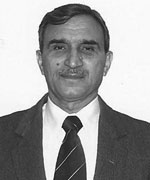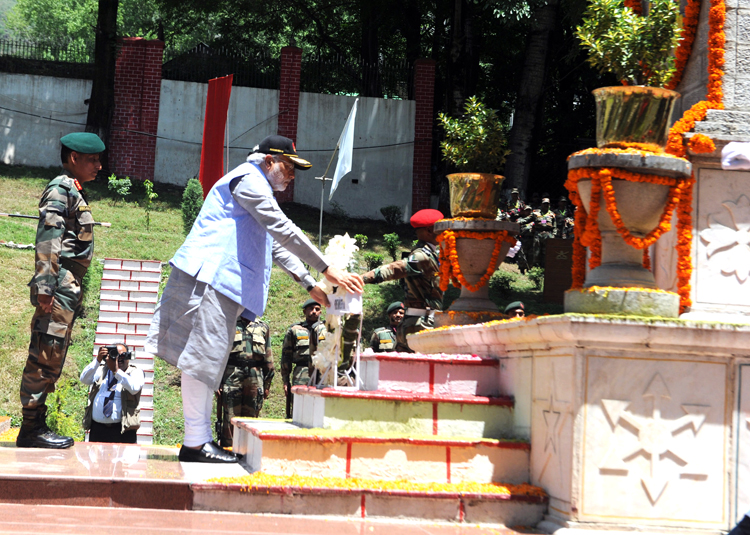Guest Column | Arms and the Men
 Lt Gen. Balraj Nagal (retd)
Lt Gen. Balraj Nagal (retd)
The five pre-1998 nuclear powers have matured their Nuclear Command and Control Structures, and Nuclear Forces Structures (NFS) over a period ranging from 70 years for the US to 50 years for China.
The Cold War arms race created thousands of systems for command and control or functioning of military forces. The C4ISR systems deployed or under development provide 24 hours continuous surveillance of each other’s areas/offensive weapons, detect movement of strategic systems or change of deployment patterns and allied/linked systems. The command and control of these powers are well developed, with state-of-the-art electronic systems to function under NBC conditions. The command centres are located in deep underground hardened shelters, capable of withstanding nuclear attacks, functioning 24x7.
Today, the US, Russia and China deploy Intercontinental Ballistic Missiles (ICBMs) with ranges of 10,000 km or more, the US and Russia operate SSBNs with missiles with ranges of 10,000 km and China is in the process of operationalising a SSBN with missiles of 7,000-8,000 km range; the UK and France operate SSBNs with ranges of 10,000 km, the air element of the triad has bombers with air launched cruise missile (ALCM). In addition, it merits mention that China today deploys missile systems of 600 km, 1,100 km, 2,150 km and cruise missiles of 1,500 km range to cater for Taiwan, Japan, South Korea, Southeast Asia, India and US naval forces operating in the Pacific Ocean/seas in the proximity of the Chinese coast.
Pakistan deploys missiles with ranges of 180 km, 290 km, 450 km, 700 km, 1200 km and 2,000 km, besides cruise missiles of 350 and 700 km. The US has fielded missile defence at select areas and will also provide coverage to allies. All strategic nuclear forces have matured to fulfil the needs of strategic deterrence. During the Cold War, NATO and Warsaw Pact in addition to strategic deterrence adopted nuclear war fighting strategy, and during this period the arsenal of tactical nuclear weapons dominated the inventory and reached thousands of weapons.
India has organised its nuclear command and control/nuclear forces in the last decade or so. The question arises on how much India has learnt from these powers, whether it acquired a command and force structure that will meet the needs of deterrence, nuclear signalling and operational readiness? Command and force structures in essence include C4ISR (Command, Control, Communications, Computers, Intelligence, Surveillance and Reconnaissance), Command and Control centres, military forces to operationalise the nuclear deterrent, nuclear hardware, delivery systems, and bases or locations to house/deploy the systems. These aspects are discussed in ample detail in the book Managing Nuclear Operations by Ashton B. Carter and others. All countries build and operate their strategic and nuclear force structures based on the adopted nuclear doctrine and strategy. India follows the strategy of nuclear deterrence, policy of No First Use (NFU) and massive retaliation, therefore, it will build nuclear structures to suit this requirement.
Broadly, these monitor the adversary, conduct surveillance, detect launches of missiles or aircraft delivered weapons, track path of delivery systems, destroy incoming delivery systems, confirm nuclear strikes, absorb the losses due to counterforce and countervalue strikes, decision to retaliate, order retaliatory strikes, launch massive retaliation strikes, assess damage to targets, order additional strikes where required, remain prepared for and conduct follow on strikes till the adversary submits, and maintain arsenal for other adversary. This is a simplistic description of the complex requirement of nuclear operations, however, this matrix will be used to describe (within classification limitations) the requirements for India, some aspects suggested would be the author’s ideas.
The first issue which emerges from C4ISR is command and control, and therefore structures need to be created to provide direction and guidance on doctrine, policy, strategy, monitor situations, develop and manage nuclear forces during peace, and command these in war.

Prime Minister Narendra Modi at Badami Bagh cantt in Srinagar
Amongst the nuclear weapons nations, two distinct governance systems exist, the singular decision i.e. presidential (USA, Russia, France and China) and the collective i.e. cabinet/parliamentary (UK, India, Israel and Pakistan). The former allows decision-making by the president which appears fast and capable of immediate orders in the face of nuclear strikes, whilst the latter is joint decision by the cabinet and could be slower but is acceptable to a nation with NFU. India put in place the highest level command and control structure by creating the National Command Authority (NCA), which has a Political Council (PC) to decide on doctrinal and policy matters, give directions on development and nuclear strategy, command nuclear forces, control nuclear and fissile material production, monitor the progress of developmental activity, approve nuclear signalling policy, lay down safety and security policy and ensure implementation, and order retaliatory nuclear strikes.
The NCA at the second level has the Executive Council (EC) to bring before the PC all doctrinal and policy issues which require approval, provide analysed, scrutinised and validated inputs for decision making, the EC is responsible to ensure implementation of PC decisions through subordinate organisations. The secretariat to the NCA is also in place with the desired expertise and capability to provide inputs required by the leadership. The NCA is provided inputs from the ministry of external affairs (MEA), ministry of defence (MoD), armed forces, intelligence organisations and numerous agencies of the government.
Nuclear signalling was a weakness in the years following the release of the nuclear doctrine in 2003, at best it appeared a knee-jerk reaction. Nuclear war demands a 24x7 functional chain of command, with continuity of government and laid-down chain of succession, as exists in the older nuclear weapon states. India, too, has instituted similar procedures and processes to ensure continuity of government and decision-making in the event of nuclear war, some nations reveal the chain of succession and some keep it secret, India has decided to keep the chain of succession secret.
The political command and control authorities and military nuclear forces including the command elements must survive nuclear strikes to continue governance and order retaliation. This is achieved either by positioning them in deep underground NBC protected shelters or by keeping them mobile and dispersed including airborne; India too has followed the same principles. The creation of the command and control centres requires hardening to very high levels with support systems to function in an NBC environment. The processes and procedures to ensure safety of the political leadership, the chain of succession and military nuclear forces leadership are in place but remain in the classified sphere.
The organisations to produce, store and move fissile material and nuclear weapons, and operate India’s nuclear forces include the Strategic Forces Command (SFC), Defence Research and Development Organisation (DRDO), Department of Atomic Energy (DAE) and the armed forces elements in support of these organisations. The SFC is responsible to manage, administer and operate the triad, ensure readiness levels as ordered by the PC, deploy on mobilisation/emergency measures as part of overall plan and execute retaliatory strikes on orders.
The SFC is a tri-services organisation, to man and operate the nuclear weapons and vectors, the qualitative requirements desirable will be discussed later. Open domain information states that India’s triad consists of aircraft (Mirage 2000 and Jaguar), land missiles [(Prithvi, Agni-1, Agni-2 and Agni-3) (underdevelopment Agni-4 and Agni-5)], sea leg (Dhanush missile and underdevelopment SSBN Arihant with Sagarika missile) for nuclear weapons delivery. The DRDO is responsible for the development of all delivery systems and in assisting the DAE in the weapons programme, the DAE is the primary organisation for fissile material production, nuclear weapons devel
Subscribe To Force
Fuel Fearless Journalism with Your Yearly Subscription
SUBSCRIBE NOW
We don’t tell you how to do your job…
But we put the environment in which you do your job in perspective, so that when you step out you do so with the complete picture.








